|
|
Nokia Open Studio – behind the scenes
Nseries at Nokia Open Studio New York>>>
Nokia XpressMusic – birth of a new line-up>>>
Each launch of Nseries products carries loads of information that frequently remains behind the scenes, therefore in this article I would like to dwell on facts missed in the previous materials on Nokia Open Studio. Like any theatre begins at the coat-check-stand, Open Studio begins at the venue. The organization of this event is quite unusual and prepossesses with personal Nseries devices being handed in to all journalists – in New York it was Nokia N80 Internet Edition; earlier this year, in April, at Berlin’s show it was the original Nokia N80. Offering of smartphones to the press is not meant for “bribing” journalists; on the contrary, it’s a precisely calculated step. What is the biggest issue encountered by any manufacturer of such devices when it come to communication with the press? Definitely, lack of time for in-depth examination of devices’ capabilities, services and the very concept proposed by the company. We are all running round like a squirrel in a cage, working non-stop, and honestly do our best to get into all features, but sometimes there is just no way it could happen. The ultimate goal of Nokia’s PR-team was getting all participants familiar with the Nseries, passing the experience, as they say. In this field the company has gather truly unique experience and other manufacturers might even take a tip from Nokia on this one.

All these devices come included with SIM-cards of a local (or global) operator without any limitations on total duration of calls (international ones as well) and volume of transferred data. Such “generosity” ensures that not a single journalist would get lost in an unfamiliar city and would be always on the line (with your own SIM-card you may run out of money). Another reason is live demonstration of handset’s services and features – for example many of my colleagues tried out video calls in 3G networks for the first time only at Nokia Open Studio. In other words, a journalist can make up a point of view of his own by watching how this or that technology works in day-to-day routine. And this kind of experience is really worth the efforts.
All handed out devices were slightly altered as against commercial units – the manufacturer tried to extend the handset’s functionality with variety of extra applications. For instance, for entertainment purposes, they added Tower Blox to the toolbar, which is a time-killer in the true meaning of this word – strongly recommended. It might seem a trifle, but many journalists were incredibly excited about putting up bigger numbers there. By the way, scores could be sent to Nokia Open Studio’s page to see how high in the rankings you were.

Exclusively for this event, Nokia came up with a special site, linked in all devices. There one could find information on the city, places of interest and its remarkable peculiarities – in a nutshell, it was an online guide. At the same time, this site doubled as the heart of a game that allowed any journalist to participate. Generally speaking, it was a competition offering the participants to perform various actions like listening to podcasts, watching video clips on the handset, checking out RSS-feeds, sending and receiving mail, being involved into what was taking place at the booth during the presentation (acquiring special codes from promo-teams). A special tab was devoted to the presentation itself, where you were asked to recall who and what was said about New York, what was the meaning of one or another term. On top of that everyone was able to look through the questionnaire prior to the presentation. Any participant would devour every word that could help in solving the problem, wouldn’t he? In my opinion, the answer is not even worth thinking of – such approach significantly amplifies hype around the presentation.
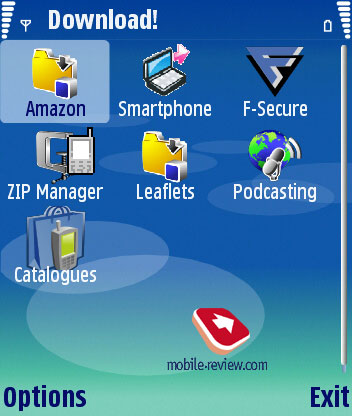
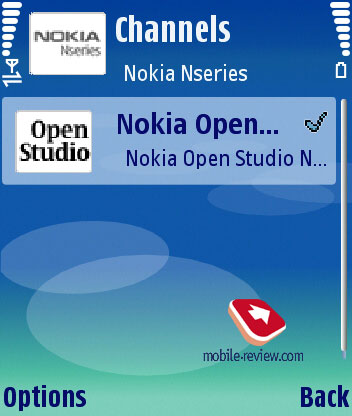
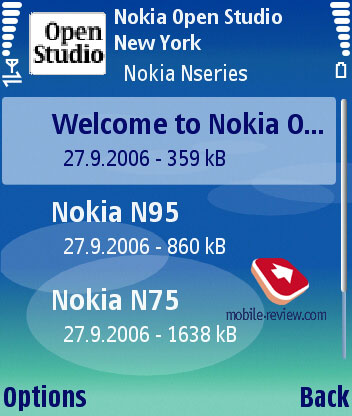
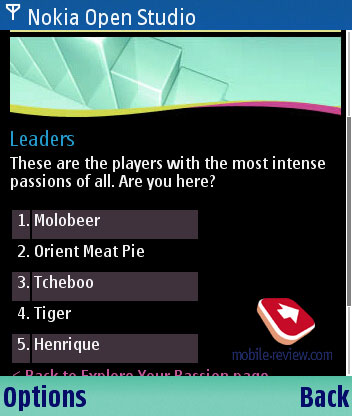
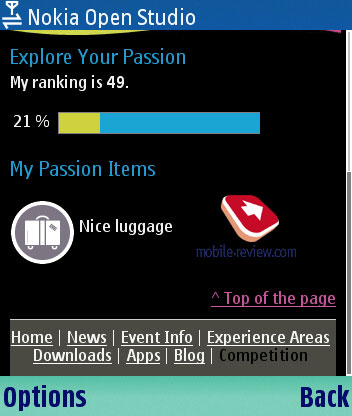
The Grand Prix of the two-day competition was a trip to any country for two persons – a very uncommon and fetching prize, indeed. But the point here is a bit different – this game makes the handset serve for both entertainment and business activities. Furthermore, all missions were well-thought and covered most of the phone’s business-functions and capabilities, which allowed us to get a definitive idea of what that device was in only two days.
For example, a shoutcast of the event was available in the first evening with Nokia Podcasting application.
Media Charger appears to be a relatively new app, since it’s a kind of a tool for user-independent uploading not only of podcasts, but other information as well, such as video, links and so on. With this program you can check out enabled channels, subscribe or leave them other. Multimedia content gets uploaded once it is available and you are online (in some ways a Push-like technology). In many respects the application doubles Nokia Podcasting’s functions, but offers better ease of use and doesn’t spam user with useless technical details. Another attraction of this program is possibility to make use of it at special events, like Nokia Open Studio.
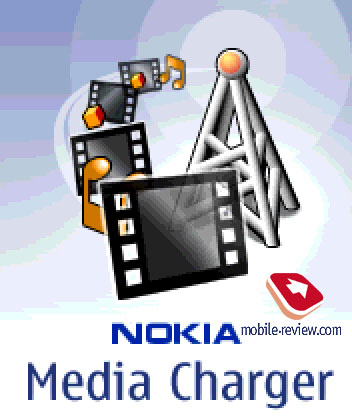
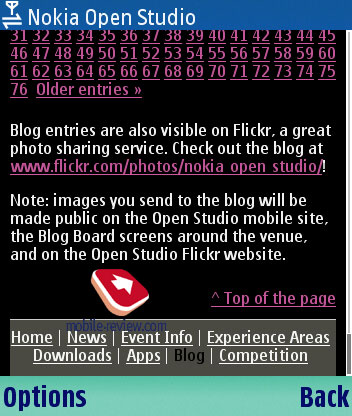
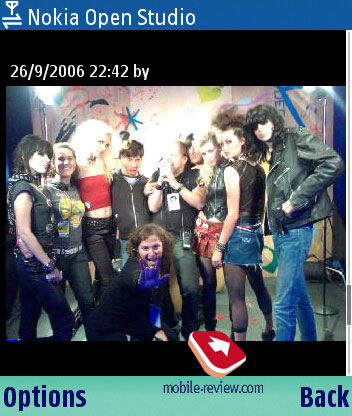
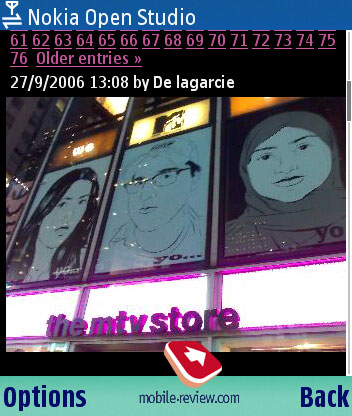
Once the journalists had enough of playing around with their brand-new Nokia N80 IE, it was really easy to foresee how easy they would handle the introduced devices. Another field where journalists got more experience is shooting – in course of most tours and at Gnarls Barkley concert in Nokia Theatre many pressmen captured video and took snaps not with their stand-alone gadgets, but with Nokia N80 instead. Good advertising, isn’t it?




All in all, not a single manufacturer has ever applied the same cocktail that includes technologies and PR, like Nokia did at its very own Nokia Open Studio. Such experience should be of prime interest for other companies.
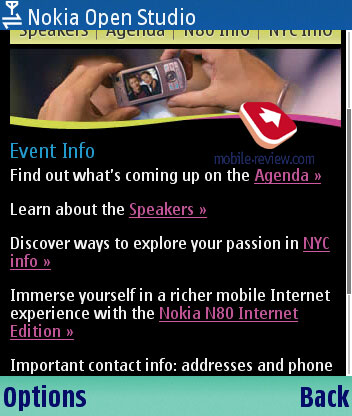

But enough of talking around, we are to get down to what has been left behind the scenes at Nokia Open Studio, specifically to multiply discussions and occasional debates that took place at the event. In fact, it’s one of those rare opportunities to have face-to-face informal conversations with the company’s representatives and more importantly, marketologists. Unfortunately the persons who are really in charge of handsets’ development are not allowed within a gunshot there. So having asked everyone I knew, who had such luck to interview or talk informally to Nokia’s bosses, we singled out the scintilla of truth and now will try to bring them together. In order not to go into unnecessary detail, we will arrange the key points in paragraphs.
Increase in Nseries’s share in Nokia’s sales. The company is expanding its range at incredible pace, and smartphones have a lot to do with that. Earlier this year the company has ambitiously set out not only to increase sales of Nseries but party retreat from the low-end, or it’d better to say, replace some Nokia 1xxx series with more up-to-date devices. In other words the entry-level models that cost about 50 Euro are to be overtaken by top-notch solutions at the price of 350-400 Euro. It might seem ridiculous, but the fact is, forecast for sales of Nseries has been increased for all regions, while low-end units are expected to have lower sale rates. In case over at Nokia they will actually manage to materialize these plans even partly, we will witness considerable leap up in average price for a Nokia-branded device. The Russian distributors have already been notified of these plans.
Eseries and Nseries – not rivals. Development of two smartphone-based ranged goes parallelly, which means that business-users frequently find themselves choosing between an austere-looking Eseries device and less feature-packed in the sense of business-aimed features Nseries handset. Over at Nokia they realize what this problem is and as the Nseries Do New Vice-President, Erik Kunz claims – “we are working in this direction, but as you understand, I cannot talk much about it here». To my mind, advent of business-tailored devices within the Nseries range is only a matter of time – these will differ from other devices, that are to hit the market in course of the second half of 2007, in gaming capacities, more precisely, lack of thereof (in other words OMAP 1710 will go missing). Eseries are getting heavy investments and this range develops in a way that attracts more enterprise users, whereas the Nseries is moving towards the audience where one is free to pick any device. It turns out that Eseries’s aces will be additional services provided by Nokia (remote setup of various devices, synchronization etc.), while some Nseries-labeled handsets will feature these functions as well, but at worse ease of use. An elegant way to segment the market, that’s it.
Gaming devices. Failure of N-Gage leaves no chances for a gaming-centric device to appear – the company is rather planning to come up with Nseries devices (most of them) offering gaming capabilities to one or another extent. For the time being Nokia itself is developing games for such devices – to get a better idea of what it’s going to be, you can visit Nokia’s Pro Session Golf page.
The project manager, Larri Vermola, said many interesting things about that in the podcast that can be found here (8.5 Mb, ìð3).
We can rightfully say that all gaming devices are getting divided into two mainstreams: those making use of OMAP 2420/30, like N93/N95, and less sophisticated, like the modern Nseries. Senior models propose better picture quality and on top of that might house dedicated gaming keys (like those on Nokia N95’s top rim), which might serve different purposes in different applications (navigation in browser, moving in games etc.).
Despite the gaming devices being scheduled for release in the first half of 2007 and number of compatible games by the end of 2007 will exceed twenty, this field won’t be able to boast a major leap up – it would be more reasonable to expect it to happen in 2008. How Nokia is going to involve third-party developers is still obscure.
Standard interfaces. Nokia’s internal course of development implies use of standard interfaces where it is only possible – in both hardware and software fillings of handsets. This means that many Nokia-branded will soon acquire miniUSB socket as well as standard audio jack. At the same time the company is trying to follow in the footsteps of Intel (for WiFi), Ericsson (for bluetooth) and make up own solutions that would later on become industry standards. The first step in this direction materialized in the form of mobile television DVB-H, recently announced WiBree and a couple of other initiatives.
Creation of a universe around technologies Nokia is not planning on bend every effort to promote stand-alone promising technologies and will rather leave that to concerned companies. In other words, Nokia paves the way, creates an opportunity, but goes no further and focuses on the very strategy of development. For example, 3D applications for reading codes like those on Nokia N80, Nokia N93 are quite appealing, but mainly useless for lack of interest from vendors’ side. The company is going to support the technology, rather than push it forwards intensively (the same holds true for RFID).
At the same time accessories for mobile phones are getting big focus, as the company is looking for finding another “big thing”. First of all, we will see sporty accessories and external GPS-receivers. In the field of accessories the company is definitely enlisting the efforts.
Music phones. Undoubtedly, the market’s best company missed the avalanche of orders placed for music-optimized handsets that occurred in the very beginning and was provoked by Sony Ericsson with its very own Walkman brand. Nevertheless, starting from the Q4 of 2006 all Nseries-labeled solutions are becoming music-tailored, even if we are talking about the oldest units, like Nokia N70. All they have to do is alter sales package and then trims and prices respectively. New models will be focused on music capabilities in one or another way, but all of them, without an exception, will be music phones.
GPS-navigation. Nokia N95 is the fist company’s handset to show off a built-in GPS-module. This filed is getting more attention in 2007, but number of corresponding devices won’t be that big (3-4 more). The main momentum will emerge in the first half o 2008, when mid-end units will start obtaining GPS-receivers of the next generation (to give you a hint at what is about to happen: remember the European navigation system and its release dates).
Cameras. Before we had time to shout “WOW” looking at Nokia N93’s camera with its video recording trumps, the next generation is coming up, and the main highlight here is definitely Nokia N95. In all conversations it was always stated that many applications would differ for various Nseries devices, since not all cameras were going to get auto-focus onboard. Such division into class will hold out for a while – as a matter of fact, it’s a real opportunity to make up truly different devices. Auto-focus armed cameras are going to be implemented only into imaging or specialized solutions.
Lifetime. In future battery lifetime will keep on getting lower – basically, all they do now is trying to make it hold on the today’s level, as there is no absolute cure for this problem, which means that the most feature-packed devices will last a day or so – not too much, but more or less acceptable.
Advent of cheap Nseries range. In 2007 might turn to N5x index for launching relatively inexpensive Nseries-branded devices. Presumably these are going to base off an outdated platform that will reduce the costs dramatically.
P.S. In this short article we tried to highlight the most interesting aspects of further development of the Nseries. Wrapping it all up, I would like to say that all the fakes, popping up all round the Web, concerning Windows Mobile 2007-powered Nseries handsets, have been grabbing all my attention since recently. Maybe, someone will take a shot of a prototype? We will be really glad to publish it here, on Mobile-Review.com.
Eldar Murtazin ([email protected])
Translated by Oleg Kononosov ([email protected])
Published - 20 October 2006
Have something to add?! Write us... [email protected]
|
News:
[ 31-07 16:21 ]Sir Jony Ive: Apple Isn't In It For The Money
[ 31-07 13:34 ]Video: Nokia Designer Interviews
[ 31-07 13:10 ]RIM To Layoff 3,000 More Employees
[ 30-07 20:59 ]Video: iPhone 5 Housing Shown Off
[ 30-07 19:12 ]Android Fortunes Decline In U.S.
[ 25-07 16:18 ]Why Apple Is Suing Samsung?
[ 25-07 15:53 ]A Few Choice Quotes About Apple ... By Samsung
[ 23-07 20:25 ]Russian iOS Hacker Calls It A Day
[ 23-07 17:40 ]Video: It's Still Not Out, But Galaxy Note 10.1 Gets An Ad
[ 19-07 19:10 ]Another Loss For Nokia: $1 Billion Down In Q2
[ 19-07 17:22 ]British Judge Orders Apple To Run Ads Saying Samsung Did Not Copy Them
[ 19-07 16:57 ]iPhone 5 To Feature Nano-SIM Cards
[ 18-07 14:20 ]What The iPad Could Have Looked Like ...
[ 18-07 13:25 ]App Store Hack Is Still Going Strong Despite Apple's Best Efforts
[ 13-07 12:34 ]Infographic: The (Hypothetical) Sale Of RIM
[ 13-07 11:10 ]Video: iPhone Hacker Makes In-App Purchases Free
[ 12-07 19:50 ]iPhone 5 Images Leak Again
[ 12-07 17:51 ]Android Takes 50%+ Of U.S. And Europe
[ 11-07 16:02 ]Apple Involved In 60% Of Patent Suits
[ 11-07 13:14 ]Video: Kindle Fire Gets A Jelly Bean
Subscribe
|
















